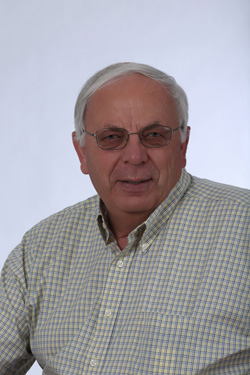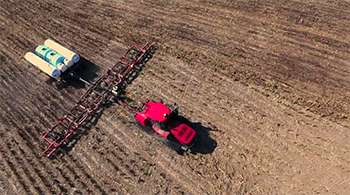|
Order More Cows with Exactrix®
Winter Wheat Management.
Update on Exactrix® and Reports from Crop Quest.
Exactrix® TAPPS working well in seed corn and commercial corn.
 1 1
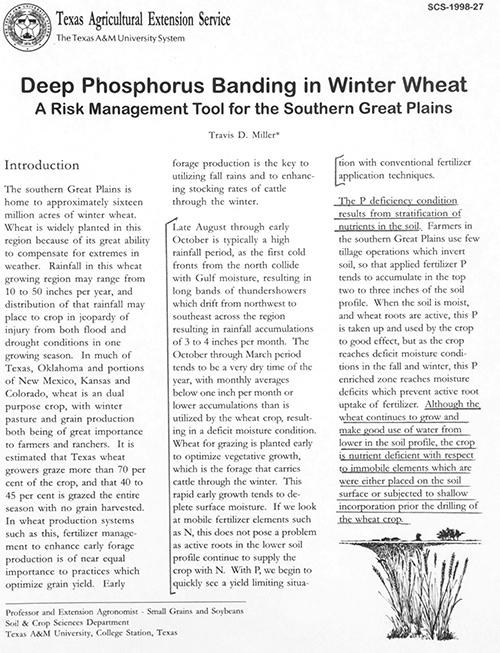 2 2
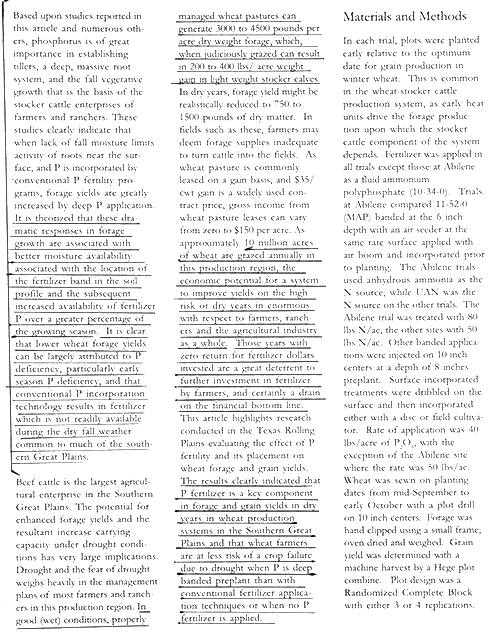 3 3
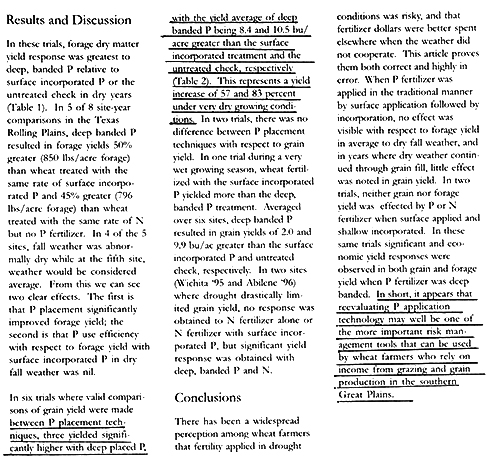 4 4
 5 5
An economic
revolution with an
Exactrix®
No-tillage system with TAPPS and Stocker
Feeders on Winter Wheat.
Here is a
supporting document for
Exactrix® TAPPS in forage production of 10
million acres of the Southern Great Plains.
 6 6
Crystalline
TAPPS, Exactrix®
Application Chemistry Drives Nutrient Efficiency In All Soil Types.
Beef cattle on
forage is the largest Agricultural enterprise on the Southern Great
Plains.
The potential for
enhanced forage yields and the resultant increase carrying capacity
under drought conditions has very large implications.
Stocker feeders
can gain up to 400lbs. per acre or $200 to $250 per acre and in
exceptional conditions up to $400 per acre income per acre. GJS
Up to 4,500 lbs.
per acre dry weight forage can be produced.
Stocker feeders
can gain up to 3.5 lbs. per day with proper fertilization, No-till
and good rainfall. GJS
The banding
techniques of Exactrix® TAPPS on high and low pH soils and
TAPPKTS® on low CEC soils to 7 and 8 inch depths.
This new Exactrix®
and proven Exactrix® technique also includes Thio-sul ® and
Ammoniated Zinc which keeps protein levels much higher in the forage
and grain.
The Stocker Feeder
carrying capacity target goal increase is 155% to 200% with TAPPS at
much lower costs of production, Exactrix®
owners going No-till are planning on more Stocker Feeders in
2018/2019.
Confirmed by
Howard Bartel of Crop Quest….150% more cows and up to 200% more cows
with No-till and Exactrix®
TAPPS.
Here is what the
scientist at Texas A and M discovered.
https://today.agrilife.org/2017/09/01/miller-retires-38-years-agrilife-extension/
Travis Miller
says, “ Late August through early October is typically a high rainfall
period, as the first cold fronts from the North collide with Gulf
moisture, resulting in long bands of thunder showers. The thunder
showers drift from northwest to southeast across the region
resulting in rainfall accumulations of 3 t 4 inches per month. The
October thru March period tends to be a very dry time of the year,
with monthly averages below 1 inch per month. This is lower
accumulations than what the wheat crop utilizes. This dry period
results in a deficient moisture condition.”
Late August through early October is typically a high rainfall
period, as the first cold fronts from the North collide with Gulf
moisture, resulting in long bands of thunder showers. The thunder
showers drift from northwest to southeast across the region
resulting in rainfall accumulations of 3 t 4 inches per month. The
October thru March period tends to be a very dry time of the year,
with monthly averages below 1 inch per month. This is lower
accumulations than what the wheat crop utilizes. This dry period
results in a deficient moisture condition.”
Travis further
states, “ Wheat for grazing is planted early to optimize vegetative
growth. This rapid early growth tends to deplete surface moisture.
Travis confirms
that, “ If we look at mobile fertilizer elements such as N, this
does not pose a problem as active roots in the lower soil profile
continue to supply the crop with N.
Travis reviews
Phosphate, “With P, we begin to quickly see a yield limiting
situation with conventional fertilizer application techniques.”
7
Dr. Travis Miller
 8 8
What is different
from the old top dress or seed row phosphate approach?
Remember that Travis Miller 1998 study is prior to P-51C Mustangs
with 7 to 8 inch No-tillage deep banding and Exactrix®
TAPPS with Vermiculated Bands at 1% CV.
Travis did testing
on 10 inch spacing with 8 inch deep tillage using chisels and discs
in multiple passes. Travis used a tillage system to band deep. About
4 to 5 inches of soil moisture was lost in the tillage system.
In winter wheat
production each 1 inch of stored soil moisture results in 7 bushels
of yield. Up to 35 bushels of yield potential was given up due to
tillage.
Travis application
equipment had a 30% CV of application at the minimum. He did use
ammonia at one location and in the time period ammonia application
equipment was old fashioned and poor in pressure reducing mode. For
sure there was poor application equipment.
Travis did not use
band stabilization of TAPPS with Thio-Sul. In fact a portion of the
testing was with non-stable UAN.
-
Exactrix®
15 inch band spacing in crystalline TAPPS on high pH calcareous
soils. So the bands are more concentrated with Exactrix®
and placed deep at 6 inch to 8 inch depth.
-
Exactrix®
is totally No-till which means better and better with Rotational
Band Loading.
-
The 1% CV of
application means TAPPS will perform with 166% more crop available
nutrients and Ammoniated Zinc can be added.
-
In drought
stress conditions, Roots will develop much deep in October to
December.
-
The Deep bands
at 6 to 8 inch depth will allow the roots to colonize in more
consistent moisture with No-tillage.
-
Long Term
residual bands of TAPPS with Zinc with support even better root
growth and development.
On Sandy soils of
the Great Plains it may be more effective to band TAPPS and TAPPKTS
into growing wheat.
 9 9
 10 10
 11 11
The
Southern Great Plains
rainfall pattern is lighter in October through March. Therefore
No-tillage is critical to store moisture in July, August and
September.
This similar to the
Palouse Country of the PNW
that
must store winter moisture to raise good winter and spring wheat
crops. No-tillage is critical to maximize storage of summer moisture
patterns in Texas just like Washington State. It is critical to
store moisture in the winter months.
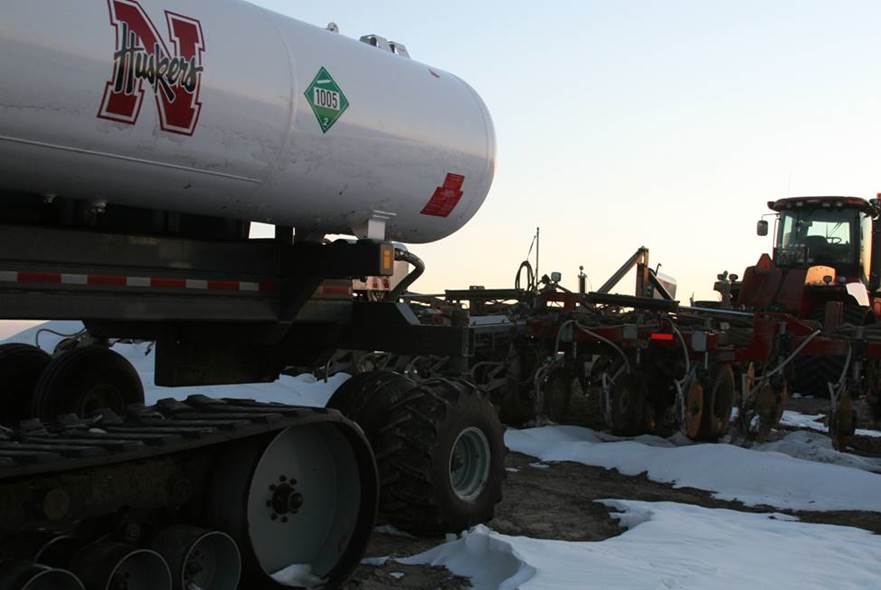 11.1 11.1
The
No-till systems of the Southern Great Plains soil
must store moisture in July, August, September…at 3 to 4 inches per
month. Some rainstorms can be hurricane residuals, like Harvey which
dumped 12 inches in August of 2017 and wiped out the soil to the
tillage depth and severally damaged the winter wheat stand.
Or
September 2018 hurricane residuals at Munday and
Haskell, Texas that supplied 24 inches of moisture ( 5
times above normal) from late August to Mid-October. The pattern of
rainfall and intensity or rainfall requires No-tillage systems to
keep soil and water in place and raising yield potential.
Soil
erosion will come to a dramatic halt with Mustang Tool Bars
implementing No-tillage on the rolling slopes and plains. The system
will require about 3 years of continuous No-tillage to build root
channels and eliminate tillage layers. Freezing of soils happens
seldom to compaction of soils is possible. The will require track
applicators and track tractors to protect the soil.
 11.2 11.2
.
Rotational Band Loading is possible by the third year….with
average band spacing on fifteen inch centers at 8 inch banding
depths of Tri-Ammonium Poly Phosphate Sulfate with Zinc or TAPPS
plus AZn.
Thus
No Tillage and deep banded P makes the big difference….Deep
Banded means 6 to 8 inches in depth with Ammoniated P as
10-34-0 and Thio-Sul® or Triple Ammoniated Poly Phosphate Sulfate
with Zinc….or TAPPS with Thio-Sul and AZn.
And
today with Exactrix®
P-51C Mustang openers,
Nutrients can be injected into growing and established winter wheat.
 12 12
It is always better to
inject phosphorus into the soil when making pre-plant applications.
Make sure it is Exactrix®TAPPS and TAPPKTS.
Banding to 8 inch
depths and placing the vermiculated TAPPS
in concentrated and vertical strips, is the most efficient method
of all to reduce P rates and yet get the top yield in all soil
types.
Banding of liquid 10-34-0 in streaming flows at 1% CV of application
or absolute uniformity means less P and K is required to get more
grain and forage.
Banding is preferred where soil is very deficient in P or high in
calcium carbonate. If it is only a minor deficiency (50 ppm or
greater), the cost of banding P may not be justified.
However, when applying NH3 banding deep is obviously required and
10-34-0 and Thio-Sul® get a free ride. Making nutrient application
Phenomenally efficient on fifteen inch band spacing….and low 5 and
10 lb. rates of P are used.
 12.1 12.1
 12.2 12.2
Late May Exactrix®
Mustang Banding in Double Crop, Raising forage at Garden City, KS,
First Crop, Green Chop Triticale, Second Crop, Green Chop
Sorghum/Sudan,
Exactrix®
TAPPS Deep banded adds 10 to 20 more days to the growing period with
No-tillage. Superior efficiency is realized along the Arkansas river
of western Kansas.
Thio-sul® is always
applied at 3.5 to 7 gallons per acre. Typically a rate of 10-34-0 at
3 to 7 gallons per acre. Thio-sul® stabilizes the band and provides
2 types of Sulfur, 50% elemental sulfur and 50% sulfate,
Plus micro nutrients
are freed up in the exclusive pH swing of TAPPS. Starting at 8.5 to
9.5 pH and mellowing downward to 6.5 pH the micronutrients are
oxidized and freed up with Thio-sul® in the band.
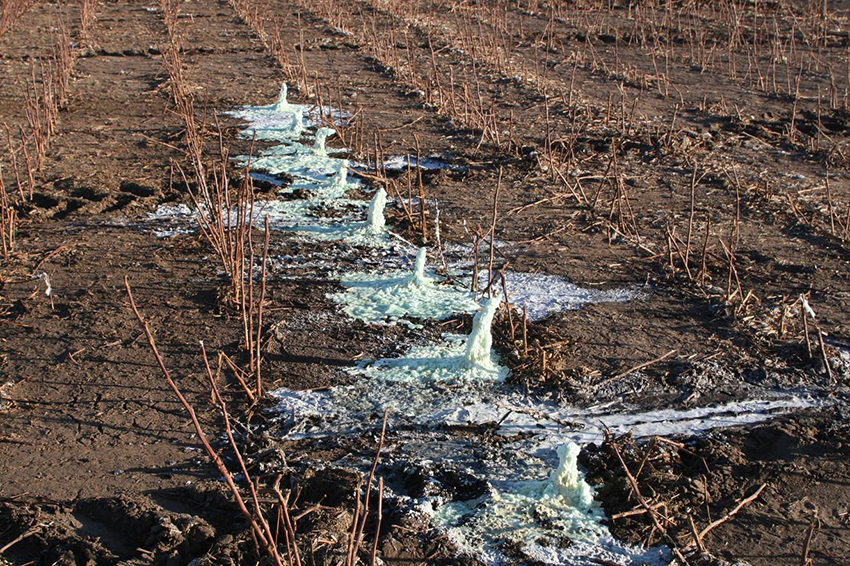 12.3 12.3
Always remember that
KTS® or potassium Thio-sulfate works very similar to Thio-Sul® in
the band of TAPPKTS.
Zinc is always required in the band to rationalize biological
activity and supply the critical metal in soils that are general
deficient due to the drop in OM. Always use low cost Ammoniated
Zinc, 16-0-0-20Zn
Banding without soil disturbance is critical to raising high quality
alfalfa. In fact when establishing alfalfa make sure you pre-plant
band TAPPS for a great start. Then maintain the stand after the last
cutting with TAPPS and TAPPKTS with micros.
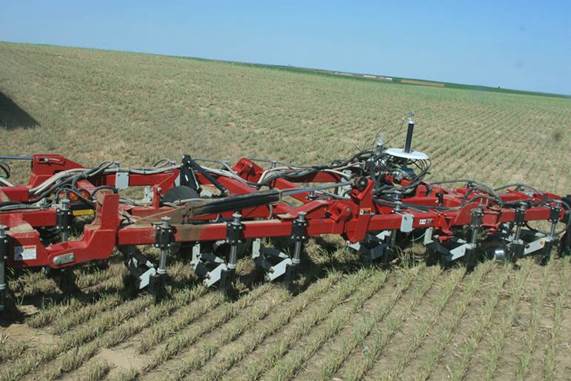 12.4 12.4
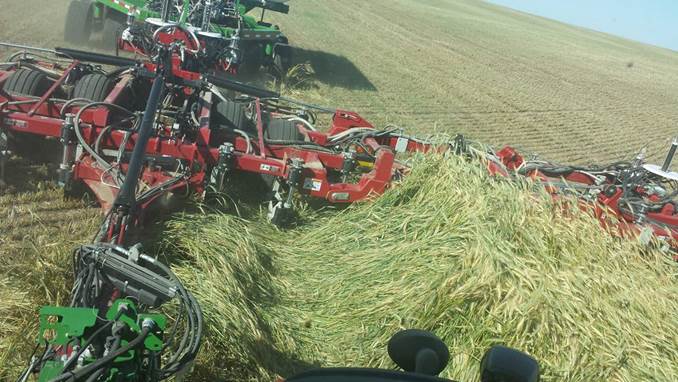 12.5 12.5
Banding phosphorus into established alfalfa is optional when the
production margin is big. Producers are often wasteful with
nutrients because top dressing is so easy. Top-dressing dry
fertilizer works sometimes but it takes a lot more fertilizer with
top dressing and the response is slower due positional availability
and non-uniform applications of non-mobile P and K. Deep Banding to
7 to 8 inch depth with Exactrix®
TAPPS and TAPPKTS works every time in Alfalfa and
perennial pasture crops (Coastal Bermuda and Bahia Grass) of the
Southern Great Plains.
Large dry fertilizer applicators have application CVs of 25% to 50%
which result in fertilizer that is not crop effective and preventing
the promise of high yields. Up to half of the application of dry
fertilizer is wasted into the environment. In fact dry fertilizer
application is wasteful due to non-uniform spreading over the
top. There is a yield loss for years to come with Phosphate top
dressed. Slopes and windy days complicate the problem. Sometimes
the applicator will actually outrun the supply belt to the spreader
spinner requiring a
re-application.
 13 13
 14 14
Shallow rooted
Bluegrass is very sensitive to a poor application of nitrogen.
A costly decision with long term economic problems along an
Idaho River. The Palouse River, The most
polluted in the nation, (Man Caused) with
phosphate levels 200 times above the national maximum.
Avoiding
Dry Fertilizer Application Is Critical To Top Yields. Peformance of
future crops is jeopardized.
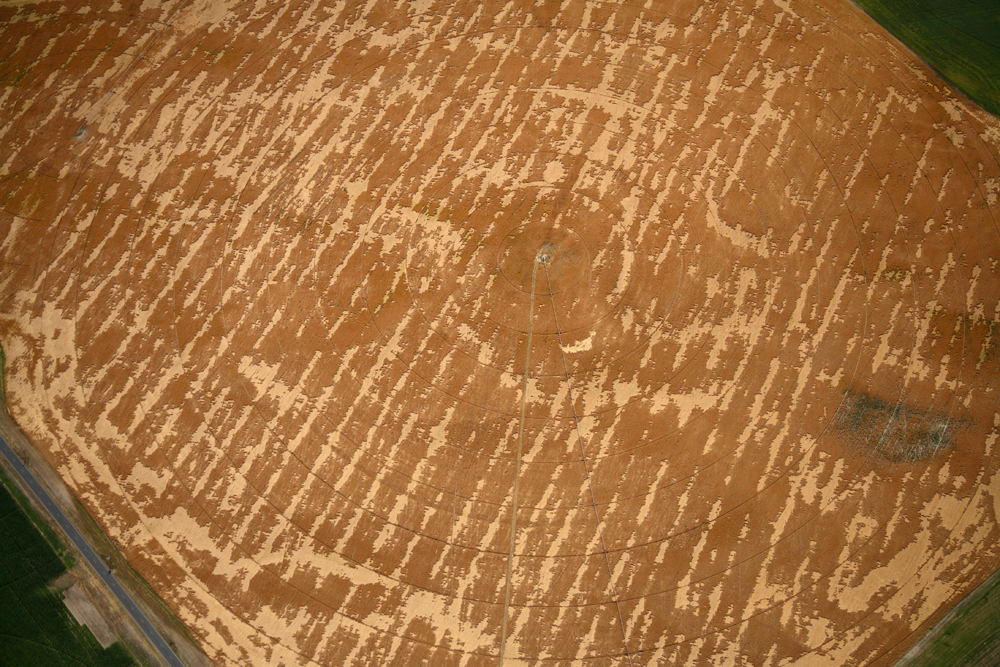 14.1 14.1
Top Dressing Winter
Wheat With A Floater. Stripped out from over and under application.
Down Wheat Costs A Lot of Money At The SHB, Spokane.
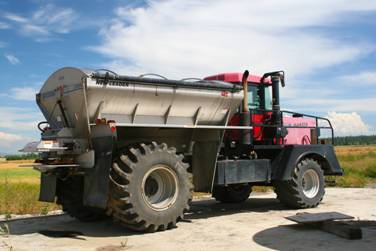 14.2 14.2
 14.3 14.3
A Gravity
Sensitive Means Of Controlled Spillage.
Agricultural pollution
of rivers, streams, and gulfs is part of doing business.
- What crop is the worst with nutrients? I
heard it was wheat.
- Since there is no world market for potatoes,
you will find non-competitive practices and in many cases
overproduction.
- In the US you will find tillage in big
margin crops, and probably the worst crop is potatoes.
- Spuds have tremendous nutrient wastes, soil
waste and wasteful use of carbon based inputs.
- Potatoes in big acres of the PNW are subject
to water and wind erosion.
- In fact, some of the worst wind erosion in
the nation is in Washington State and Southern Idaho irrigated
areas.
- Irrigated potato production drives the
economics of the rotational crops, such as corn.
- The equipment shortcut is made due to the
convenience of the producer not investing in the correct equipment
to raise corn efficiently, thus potato
production sets up corn production for pivot-applied-solution
32-0-0. Mobile nitrate with cheap water is not a good plan.
 15 15
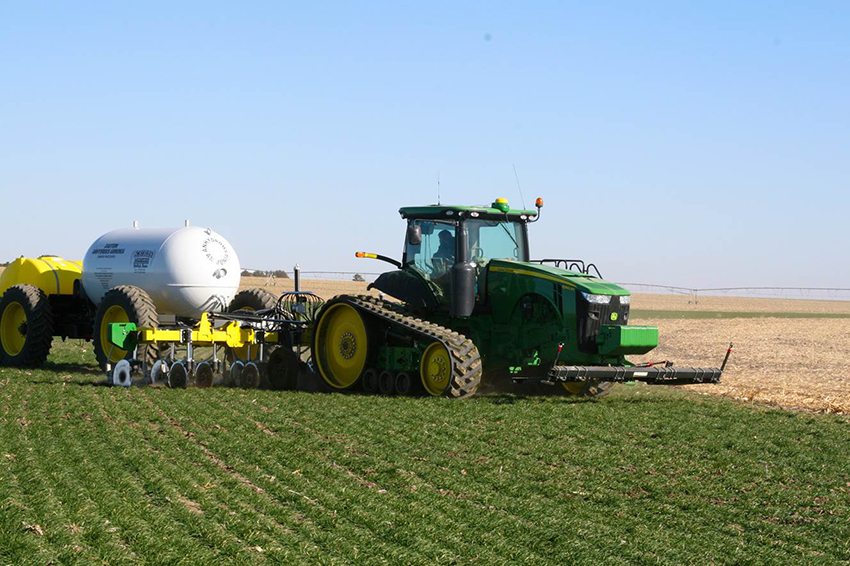 15.1 15.1
 16
16
 17 17
 18 18
Exactrix® Tri-Plex applies 3 different products formulating TAPPS,
TAPPKTS with AZn and micros, Accu-N considered. Exactrix® has
provided new bio systems... banding into growing roots.
1.
Mustang is Ideal for banding directly into wheat.
2. Virtually no root damage when side dressing seedling corn to a 6
inch depth with the P-51C.
3. Allows very deep placement of phosphate at 7 to 8 inch depth in
moist soil conditions with the P-51CUE.
4. P-51D - Fumigant Injection - 28 and 30 inch coulters banding to
depths of 9 inch.
5. Widely Tested, the Mustang seals the slot in all tested no-till
soil conditions of North America.
6. Allows low cost banding on 10 inch centers to 15 inch centers.
7. Low soil disturbance...with a soil saving warranty.
8. Lowest operating cost...lowest known operating cost with the
P-51B, P-51C and P-51CUE at banding depths to 7 inch in moist soil
conditions. Typical banding costs are $1.25 to $1.75 per acre
depending on soil type.
 19 19
 20 20
P-51CUE Mustang openers have replaceable chrome bits and Hardened
TIO's that are O-ring fitted to the injector foot.The Chrome
Replacement bit is economical to change during mid-season.
Threaded TIO's allow quick changes.
 21 21
A 7 section Case
940/Mustang at 61.5 feet banding No-till into irrigated 280 bushel
corn stover, Shelton, NE
 22 22
 23 23
At
12 mph or High Speed, Mustang banding at the 7 inch depth, Lyons, KS
along the Arkansas River flood plain.
 24 24
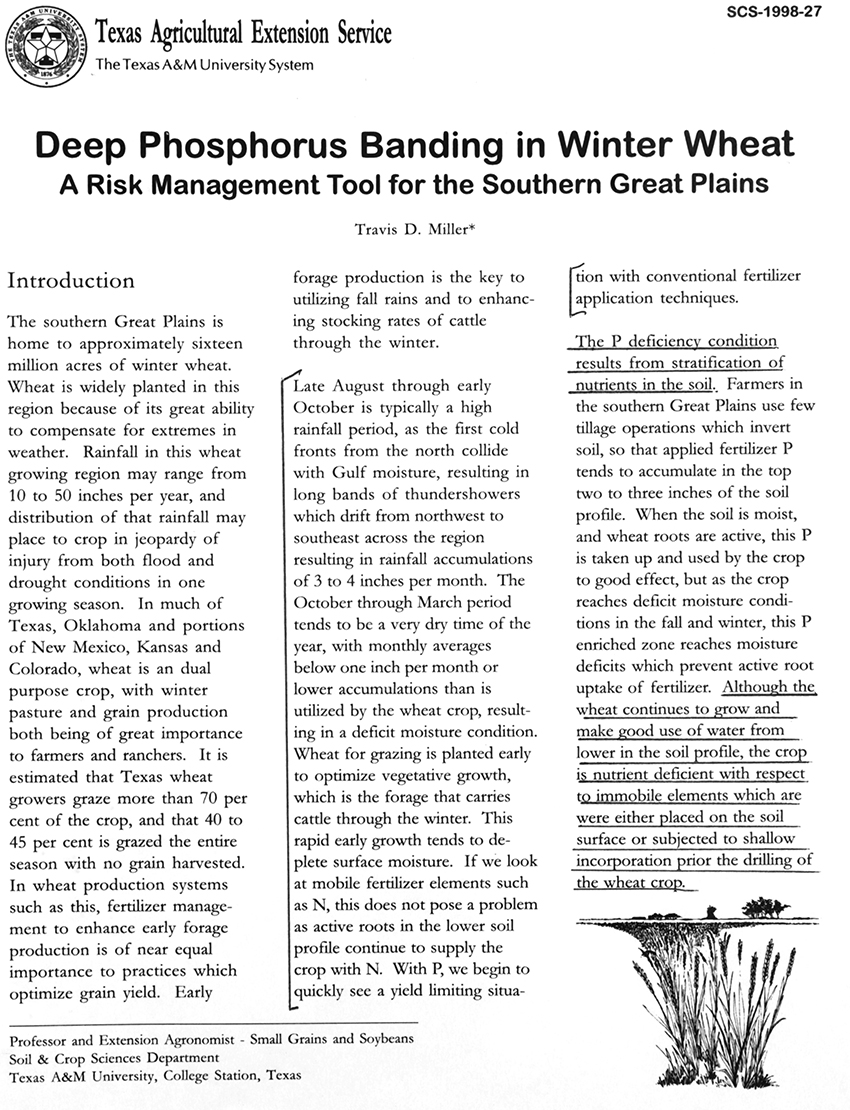 25 25
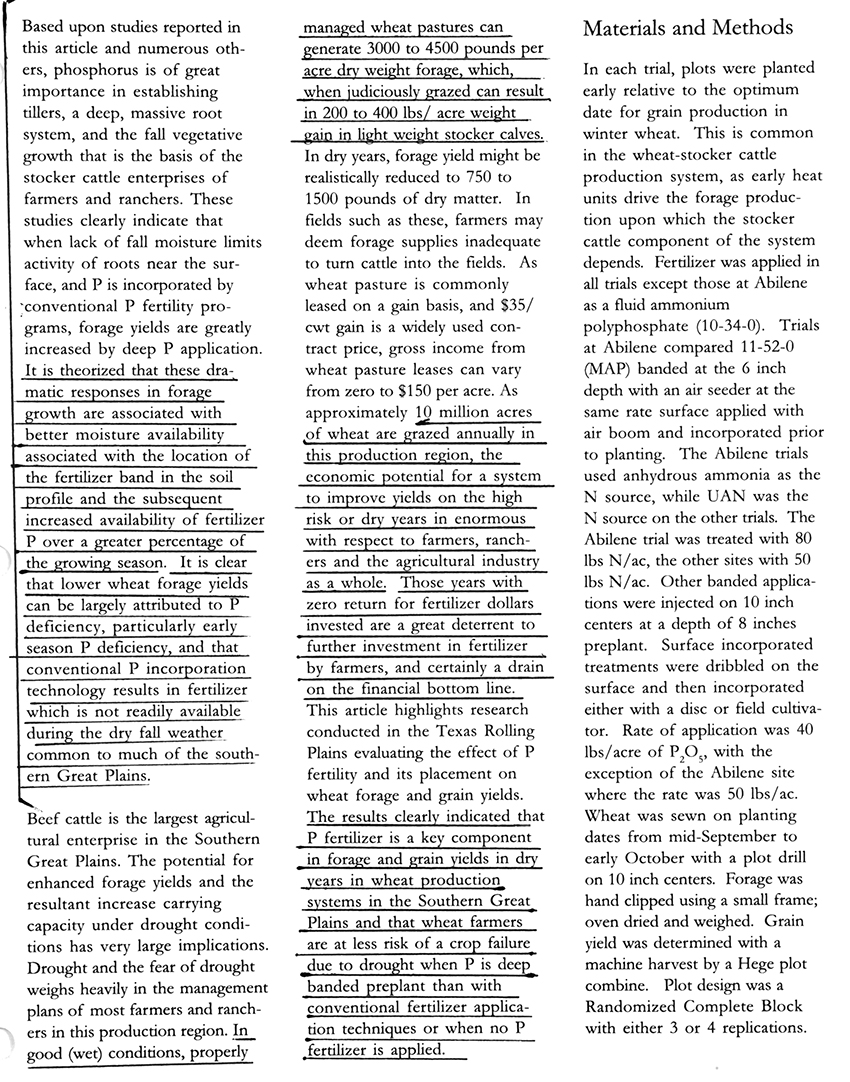 26 26
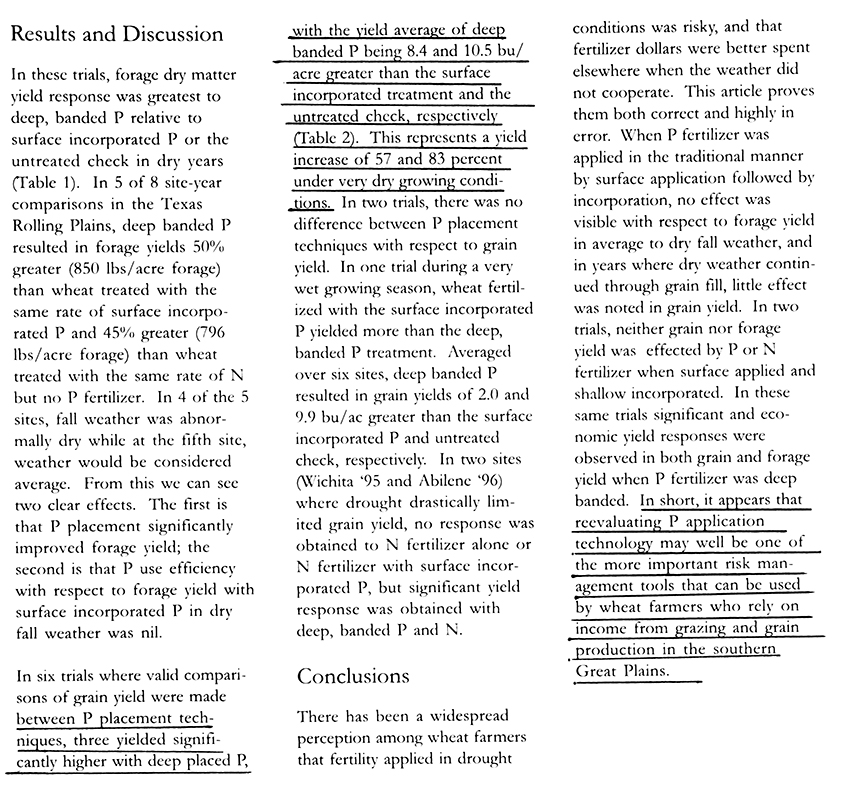 27 27
 28 28
Fertilizing Winter Wheat with Exactrix®
TAPPS in Marshall, MO area. A powerful means to conserve.

Smith Center, KS. Fertilizing Winter Wheat in early April. Big jump
in economics…much higher yields.
http://www.youtube.com/watch?v=T5botwQL49I&fmt=37
http://www.youtube.com/watch?v=OK6UVA5gLSI
http://www.youtube.com/watch?v=LIooFXM398k
COMING
UP..
Exactrix®
Nutrient Management Seminar.
Improving the Net Margin 12% under 2019 production pricing.
Colby, Kansas, Comfort Inn,
December 6th, 2018,
starting at 8:30 AM
Standing Room Only..
It can happen.
Yes Sir, Finalize now for an
exciting meeting that will allow an input revolution on your farm.
5 morning speakers with Lunch provided followed by 5 afternoon
speakers finishing at 3:35 PM.
$527 per attendee with
the best contacts and economists you can reach out to. Bankers,
Producers, Fertilizer Dealers, Landlords. Looking for answers.
Fire up early with an Ethanol tour
Dec. 5th at Campus, Kansas, Tour starts at 1:00 PM.
The entire seminar
is guaranteed.

Your Great Plains Reporter,
Guy J Swanson.
|







 Late August through early October is typically a high rainfall
period, as the first cold fronts from the North collide with Gulf
moisture, resulting in long bands of thunder showers. The thunder
showers drift from northwest to southeast across the region
resulting in rainfall accumulations of 3 t 4 inches per month. The
October thru March period tends to be a very dry time of the year,
with monthly averages below 1 inch per month. This is lower
accumulations than what the wheat crop utilizes. This dry period
results in a deficient moisture condition.”
Late August through early October is typically a high rainfall
period, as the first cold fronts from the North collide with Gulf
moisture, resulting in long bands of thunder showers. The thunder
showers drift from northwest to southeast across the region
resulting in rainfall accumulations of 3 t 4 inches per month. The
October thru March period tends to be a very dry time of the year,
with monthly averages below 1 inch per month. This is lower
accumulations than what the wheat crop utilizes. This dry period
results in a deficient moisture condition.” 







 12.2
12.2

 12.5
12.5
 14
14

 14.3
14.3



















